The Best Private Luxury Tours of Ladakh
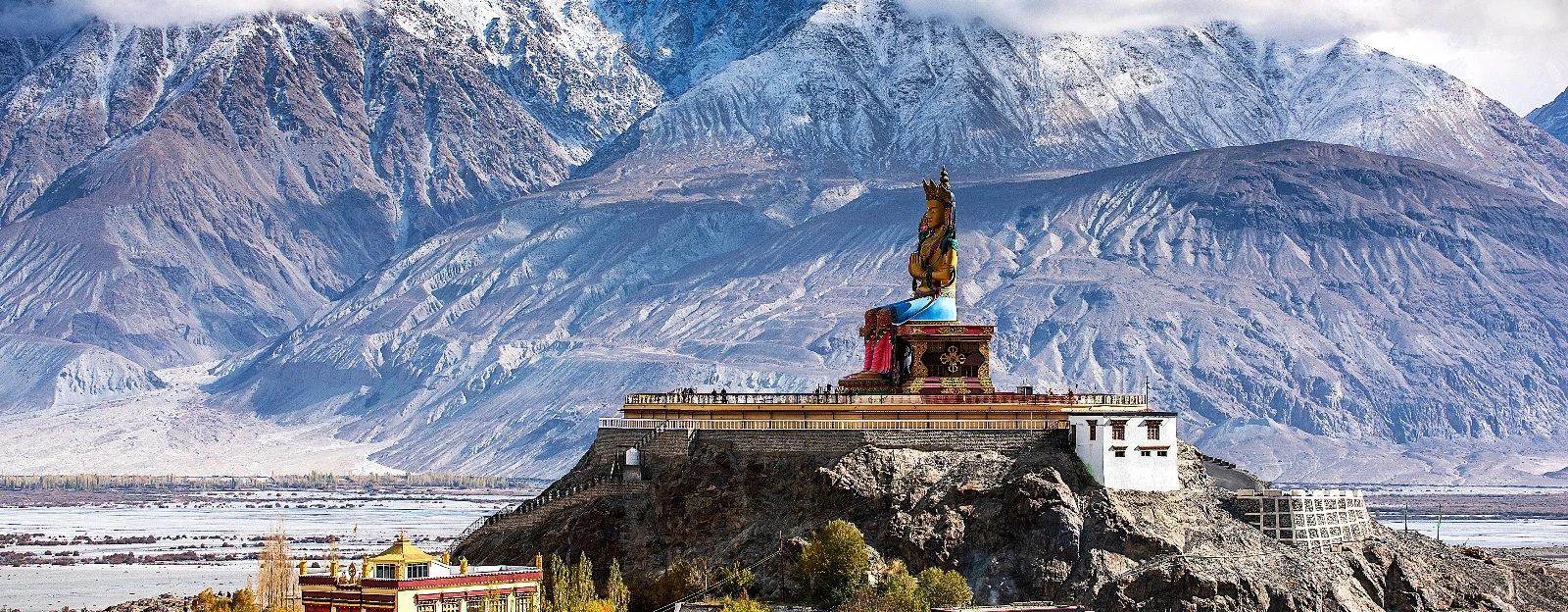
Our luxury Ladakh tours were expressly created for mature explorers who don’t want to be rushed. Easy Tours is a small boutique agency and we only offer great guides and top upscale lodging. Over 70% of our business today is repeat and referral.
Ladakh, a remote region nestled in the northernmost part of India, is a high-altitude desert cradled by the mighty Himalayas and the Karakoram ranges, creating a landscape that is both stark and spectacular. Visitors to Ladakh are immediately struck by its rugged terrain, characterized by arid mountains, stark cliffs, and breathtaking glacier fed lakes.
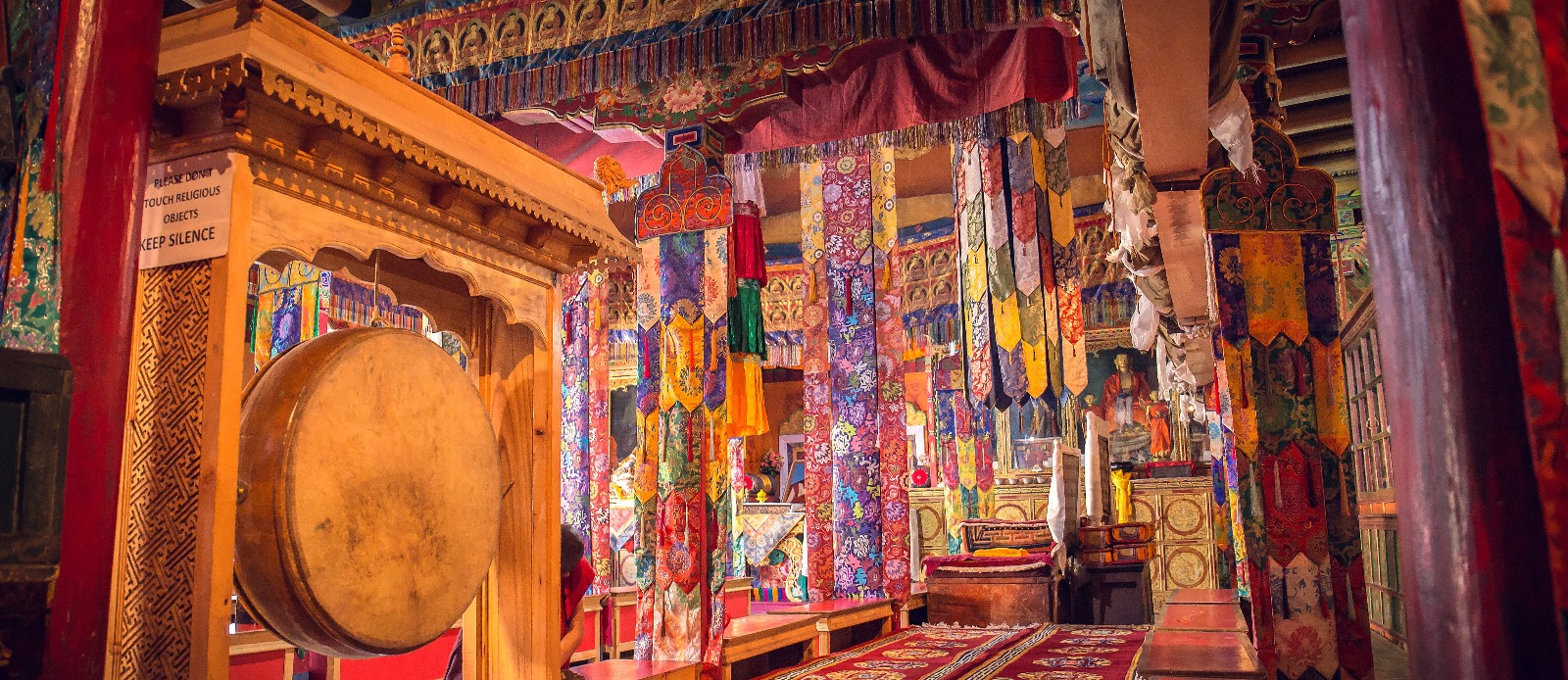
The ambiance in Ladakh is profoundly influenced by its Tibetan Buddhist culture, which permeates every aspect of life. This spiritual presence is most palpable in the region's numerous monasteries, which are not just places of worship but also the hubs of local community life. These monastic complexes, perched on rocky outcrops, are architectural marvels made of whitewashed walls and wooden accents, adorned with colorful prayer flags that flutter in the wind.
A typical visit to a Ladakhi monastery unfolds as a sensory journey. The air carries the gentle resonance of chanting monks, the deep tones of ceremonial horns, and the rhythmic beating of drums. Inside, the monasteries are richly decorated with intricate thangkas (Tibetan Buddhist paintings), statues of deities, and extensive murals depicting various aspects of Buddhist philosophy. The scent of juniper incense and butter lamps fills the prayer halls, enhancing the mystical atmosphere.
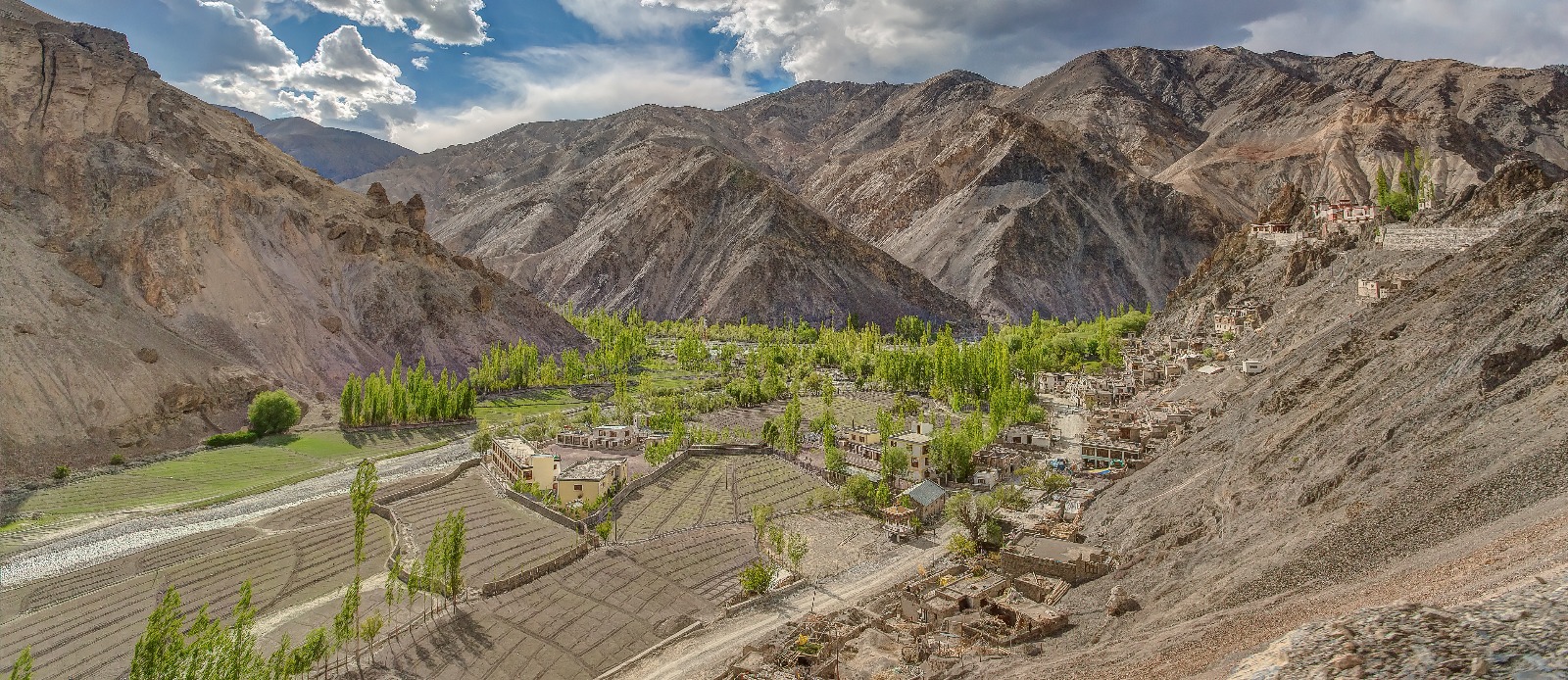
Beyond the spiritual activities, Ladakh offers a range of outdoor adventures, thanks to its unique geography. Trekking and mountain biking on rugged trails provide exhilarating ways to explore the landscape, while rafting on the Indus River offers a thrilling perspective of the region’s natural beauty. The stark contrast between the arid mountains and the lush green patches of agricultural land in the valleys is visually stunning.
The region was originally inhabited by the Indo-Aryan Mons from across the Himalayas and the Tibetan Khampa nomads. During the early centuries of the common era, Buddhism spread from India to Tibet and then into Ladakh, which became one of its strongholds by the 2nd century, with Tibetan Buddhism firmly taking root in the region by the 8th Century.
From the 10th century onwards, Ladakh was ruled as an independent kingdom, though it often paid tribute to Tibetan rulers. The kingdom reached its peak in the 17th century when many of the region’s most famous monasteries and palaces were constructed. Ladakh’s culture, language, and religious practices are closely tied to Tibet and the predominant religion in Ladakh is Tibetan Buddhism.
Visiting during one of the many Buddhist festivals can be particularly rewarding. These festivals are marked by masked dances (chams), music performances, and dramatic re-enactments of legends, providing a deep insight into the spiritual and communal life of Ladakh.
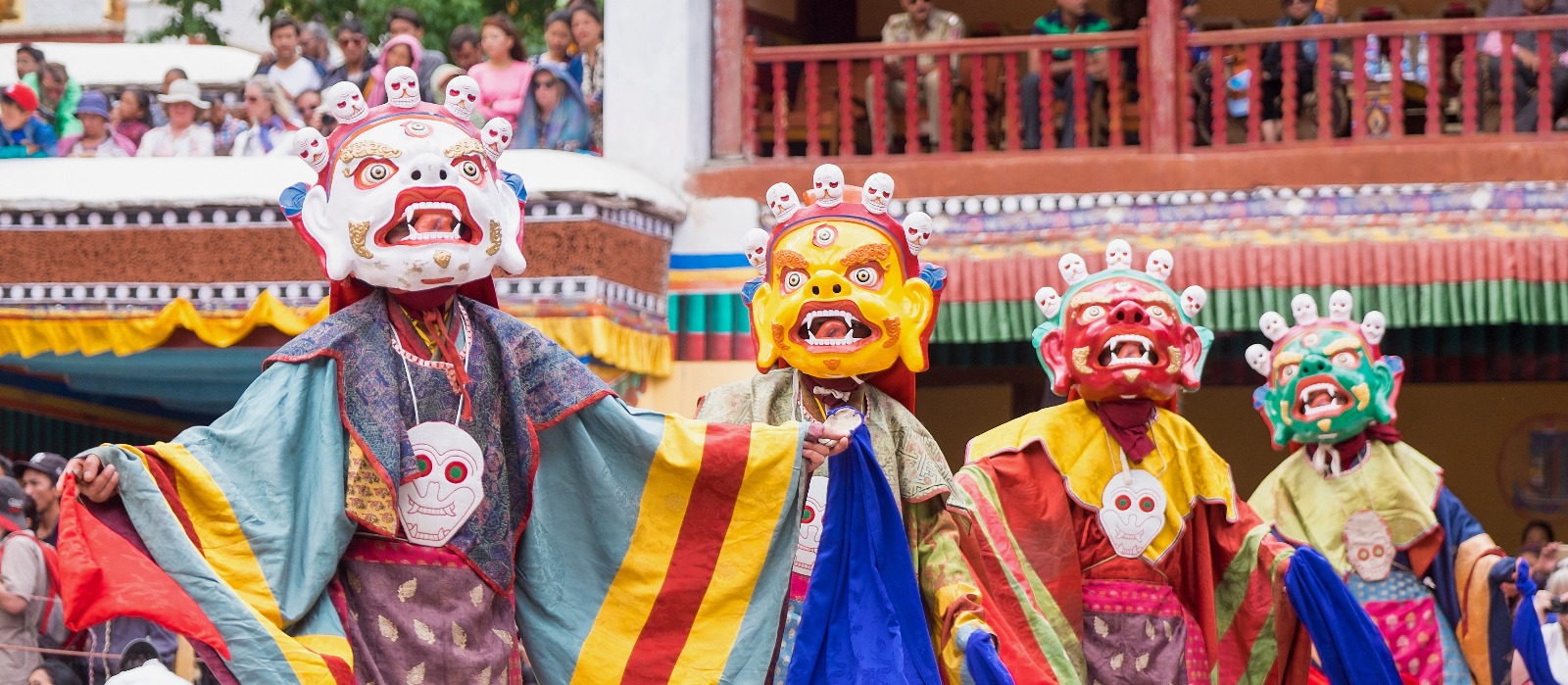
The local cuisine reflects the adaptation to the high-altitude environment and also incorporates influences from Indian and Tibetan culinary traditions. Interacting with the locals is an included enriching experience. Ladakhi’s are known for their warmth and hospitality. You can also indulge in local cuisine that is both unique and flavorful, with dishes like Thukpa, Momos, and Tsampa being must-tries.
Ecotourism is pivotal in Ladakh, with an emphasis on sustainable travel practices to preserve the delicate high-altitude ecosystem. Visitors are encouraged to engage in responsible tourism by minimizing plastic use, participating in eco-friendly activities, and staying in homestays that support the local economy and reduce environmental impact.
Our luxury Ladakh private tours were expressly created for mature explorers who don’t want to be rushed. Easy Tours is a small boutique agency and we only offer great guides and top upscale lodging. Over 70% of our business today is repeat and referral.
The two Ladakhi Regions that Easy Tours focuses on are Leh and the Nubra Valley.
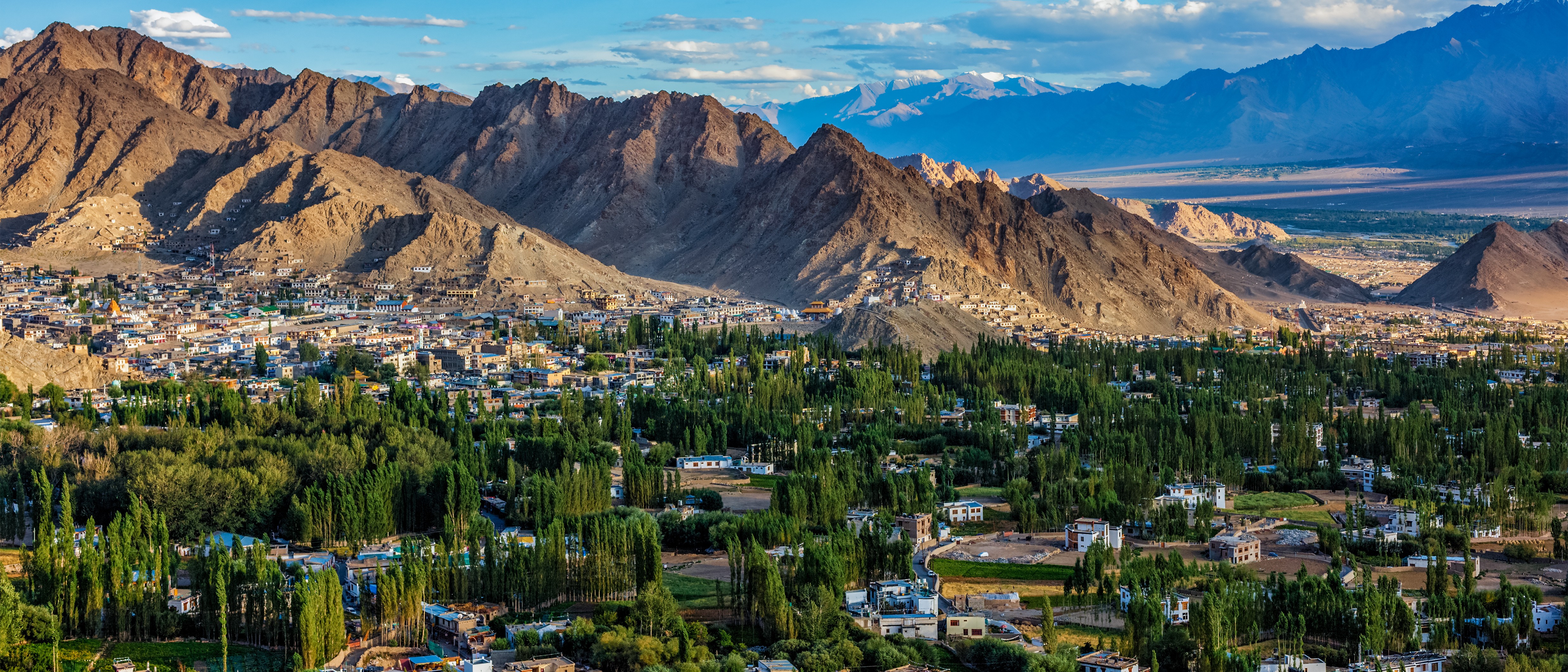
Leh: Ladakh’s capital Leh is a high-desert city surrounded by majestic mountains that change hues with the sunlight, and the clear blue skies contrast sharply with the rugged terrain. Leh is a cultural potpourri, with influences from Buddhism and Tibetan culture prominently visible. Leh has been a pivotal crossroad in the Silk Route from South Asia to Central Asia, influencing its rich tapestry of cultural and historical significance.
The history of Leh begins with its early references in the 1st century as a stopover for trading caravans traveling the Silk Route. Then it was part of the kingdom of Ladakh, and, throughout the centuries, Leh's strategic geographical location made it a contested asset among neighboring powers, including Tibetan and Kashmiri rulers. It was also influenced by Islamic culture during periods of Muslim rule, adding layers to its cultural composite. Buddhism, however, has remained the predominant religious influence in the region.
Leh is very near most of Ladakh’s most impressive monasteries. Today, Leh is also known as a premier destination for adventure tourism. Leh is a gateway to numerous trekking trails and offers ample opportunities for adventure sports. The town's economy thrives on tourism, and Leh continues to embody a blend of historical relics and modern dynamics, making it a unique and fascinating region in India's northern frontier.
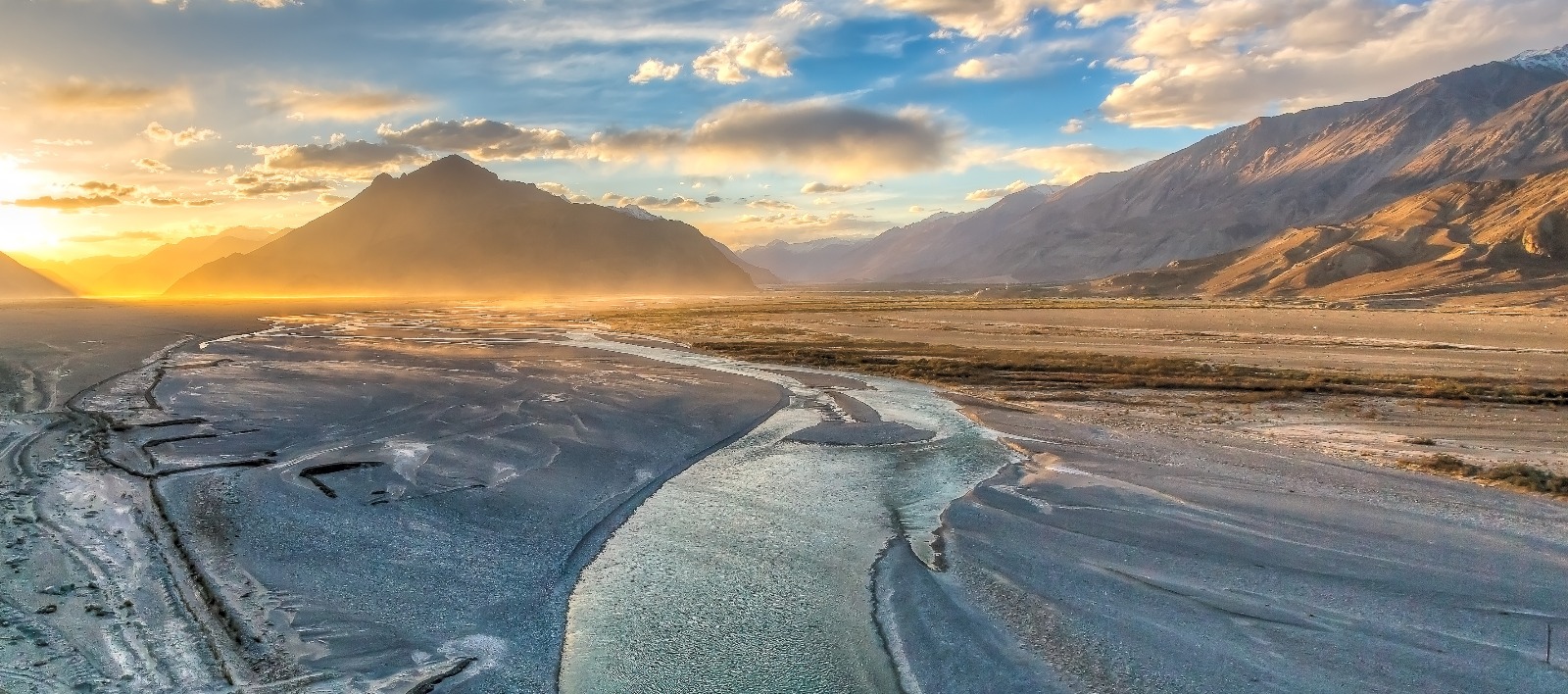
Nubra Valley. A fascinating drive from Leh will bring you to the gorgeous Nubra Valley. The journey to Nubra Valley itself is a highlight, with travelers passing through Khardung La, the highest motorable road in the world. This route introduces the first element of the valley's natural beauty—vast, undulating landscapes that shift from stone mountains to lush villages in verdant valleys to expansive sandy plains.
Once in the valley, you are greeted by the sight of the Shyok River meeting the Nubra River, creating a fertile ribbon of greenery amid the desert hues. This lushness supports the growth of thick sea buckthorn bushes, apricot orchards, and fields of barley, contrasting sharply with the arid surroundings. The white sand dunes of Hunder offer a surreal experience, with an included opportunity to ride the double-humped Bactrian camels, relics of the historic Silk Road trade routes that once passed through this region.
Culturally, Nubra Valley is a vibrant mosaic influenced by Buddhism, as seen in the numerous monasteries and stupas dotting the landscape. The Diskit Monastery, perched on a hill, overlooking the valley, is famous for its towering statue of Maitreya Buddha, symbolizing peace and protection.
For those interested in wildlife, the valley is a haven for observing several high-altitude species, including the elusive snow leopard (only in the highest mountains), Tibetan wild ass, and various migratory birds. The interaction between the arid desert and verdant riverbeds creates a unique ecosystem where these species thrive.
Pangong So. Due to ongoing border concerns with China, Easy Tours does not offer Pangong So at this time. One of the most iconic natural features of Ladakh is the Pangong Tso, a spectacular high-altitude lake known for its changing colors, ranging from shades of blue to green depending on the sunlight.

